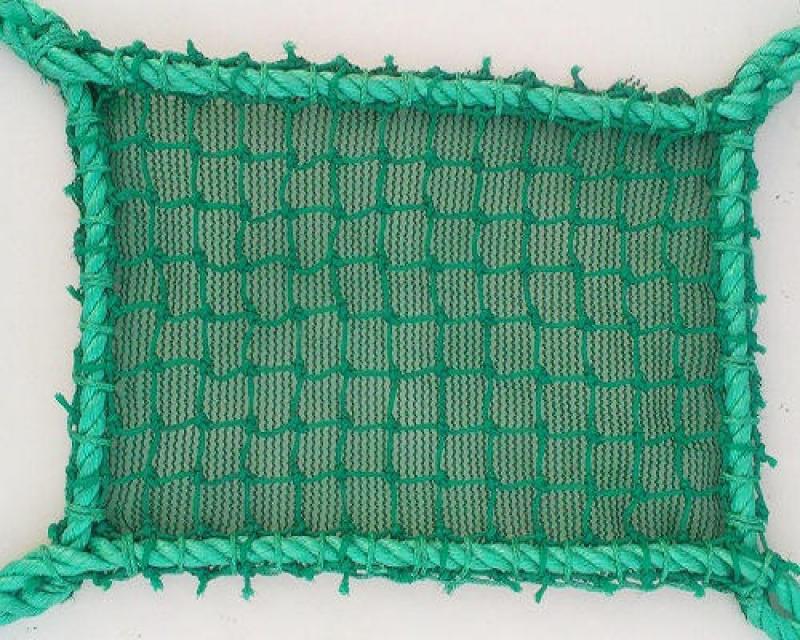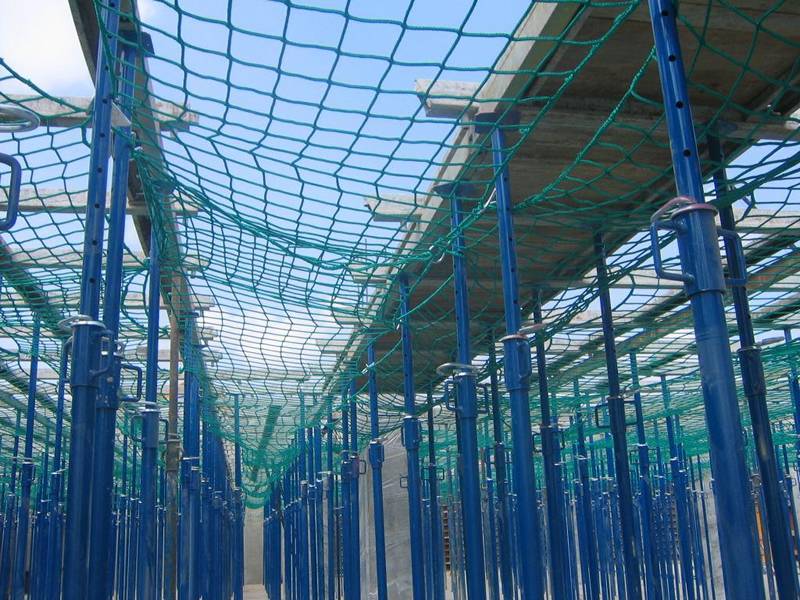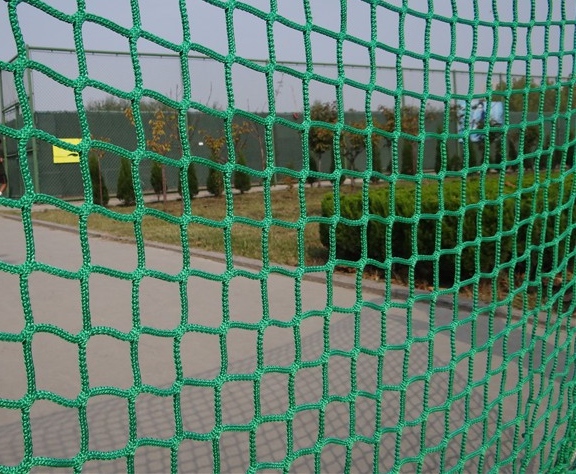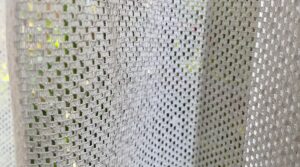In the modern era, net manufacturing has evolved significantly to prioritize not only the durability of products but also their environmental impact. As a leading net manufacturer, Nets Depot Inc is at the forefront of incorporating sustainable practices into its manufacturing processes. This blog explores various techniques and innovations in net manufacturing that enhance durability while ensuring sustainability.
The Importance of Durable and Sustainable Nets
| Point | Description |
|---|---|
| Eco-Friendly Materials | Utilizing biodegradable or recyclable components to minimize environmental impact. |
| Enhanced Longevity | Designing nets to withstand harsh conditions, reducing the need for frequent replacements. |
| Cost Efficiency | Investing in durable nets lowers long-term costs by decreasing replacement frequency. |
| Resource Conservation | Reducing waste and conserving resources through sustainable manufacturing practices. |
| Wildlife Protection | Preventing wildlife entanglement with well-designed, durable nets that minimize environmental hazards. |
➤ Advanced Materials for Net Manufacturing
✦ High-Strength Synthetic Fibers
Modern nets are often made from high-strength synthetic fibers such as nylon, polyester, and polyethylene. These materials offer superior durability and resistance to environmental factors, making them ideal for various applications. Nylon: Known for its high tensile strength and elasticity, nylon is a versatile material that can absorb shock and resist wear and tear. Its flexibility makes it suitable for fishing nets, sports nets, and more. Polyester: Resistant to UV light and weathering, polyester is a durable option for nets exposed to sunlight and outdoor conditions. It retains its strength and color over time, making it ideal for outdoor sports and agricultural uses. Polyethylene: Lightweight and chemically resistant, polyethylene is often used in industrial and marine applications. Its low density makes it easy to handle, while its resistance to chemicals ensures longevity in harsh environments.
✦ Eco-Friendly Alternatives
To address sustainability, net manufacturers like Nets Depot Inc are exploring eco-friendly materials. These alternatives help reduce the environmental footprint of net manufacturing. Recycled fibers: Utilizing recycled materials to produce nets reduces waste and conserves resources. Recycled nylon and polyester, for instance, offer similar durability to their virgin counterparts while promoting circular economy practices. Biodegradable fibers: Developing nets that decompose naturally over time helps reduce the accumulation of plastic waste in the environment. Materials like polylactic acid (PLA) and other biodegradable polymers break down into harmless substances, minimizing long-term environmental impact. Organic materials: Incorporating natural fibers like cotton or hemp provides eco-friendly options for certain applications. These materials are renewable and biodegradable, offering a sustainable alternative for specific uses such as gardening nets or bird nets.

➤ Innovative Manufacturing Techniques
✦ Knotless Netting
Knotless netting is a technique where nets are woven without knots, enhancing their strength and durability. This method reduces weak points and extends the net’s lifespan.
Traditional knotted nets can have weak spots where the knots are tied, which can lead to tears or breaks under stress. By eliminating these knots, knotless netting creates a uniform structure that distributes stress more evenly across the entire net. This results in a stronger, more resilient net that can withstand higher loads and harsher conditions.
✦ Advanced Weaving Technologies
Modern weaving technologies allow for precise control over the net’s structure, ensuring uniform strength and durability across the entire net. These technologies enable the production of nets with specific patterns and densities tailored to their intended use.
Computer-controlled looms, for example, can produce complex net designs with consistent quality. This precision ensures that each part of the net meets the required specifications, reducing the likelihood of defects and improving overall performance. Advanced weaving also allows for the creation of custom nets for specialized applications, such as anti-predator nets for fish farms or high-tensile nets for construction sites.
✦ Coating and Treatment
Applying protective coatings or treatments can significantly enhance a net’s resistance to environmental factors such as UV radiation, saltwater, and abrasion. These coatings can extend the net’s lifespan and improve its performance in challenging conditions. UV-resistant coatings: Protect nets from the damaging effects of sunlight, preventing degradation and extending their service life. Abrasion-resistant coatings: Enhance the net’s resistance to wear and tear, making them suitable for high-impact applications. Antimicrobial treatments: Prevent the growth of mold, mildew, and bacteria, ensuring the net remains hygienic and odor-free.

➤ Sustainable Manufacturing Practices
✦ Energy-Efficient Production
Implementing energy-efficient machinery and processes helps reduce the carbon footprint of net manufacturing. Sustainable energy practices not only lower operational costs but also contribute to environmental conservation. LED lighting: Using LED lighting in manufacturing facilities reduces energy consumption and lowers electricity bills. LEDs are more efficient than traditional lighting and have a longer lifespan. Efficient machinery: Employing machines with lower energy consumption minimizes the overall energy use of the manufacturing process. Modern machinery often includes energy-saving features and automation capabilities that improve efficiency. Renewable energy: Incorporating renewable energy sources like solar or wind power into manufacturing operations can significantly reduce reliance on fossil fuels. Investing in renewable energy infrastructure demonstrates a commitment to sustainability and can attract environmentally conscious customers.
✦ Waste Minimization
Minimizing waste is a key aspect of sustainable manufacturing. By reducing waste, manufacturers can lower their environmental impact and improve resource efficiency. Recycling waste materials: Recycling scraps and defective products ensures that valuable materials are reused rather than discarded. This practice reduces the demand for virgin materials and minimizes landfill waste. Precision cutting: Using technologies that reduce material wastage, such as laser cutting and automated fabric cutters, helps optimize material usage. Precision cutting ensures that nets are produced with minimal excess material, reducing waste and costs. Lean manufacturing: Adopting lean manufacturing principles to streamline production and reduce waste. Lean techniques focus on eliminating inefficiencies, improving productivity, and enhancing product quality. Implementing lean practices can lead to significant reductions in waste and resource consumption.
➤ The Role of Research and Development
✦ Continuous Improvement
Ongoing research and development (R&D) efforts are essential for improving the durability and sustainability of nets. Nets Depot Inc invests heavily in R&D to stay ahead in the industry, continually seeking new materials, technologies, and processes that enhance product performance and environmental responsibility.
✦ Innovations in Material Science
Advances in material science lead to the development of new fibers and coatings that enhance net performance and environmental sustainability. Researchers are exploring novel materials that offer superior durability and eco-friendly properties.
For example, scientists are developing bio-based polymers that combine the strength of synthetic fibers with the environmental benefits of natural materials. These innovations can result in nets that are both robust and biodegradable, offering a sustainable solution for various applications.
✦ Collaborations and Partnerships
Collaborating with universities, research institutions, and other companies can drive innovation and accelerate the adoption of sustainable practices. Partnerships enable net manufacturers to leverage external expertise and resources, fostering a collaborative approach to problem-solving and product development.
By working together, stakeholders in the net manufacturing industry can develop and implement cutting-edge technologies that enhance durability and sustainability. These collaborations can also lead to standardized practices and regulations that promote environmental responsibility across the industry.

FAQs
1. What materials are commonly used in durable net manufacturing?
Common materials include high-strength synthetic fibers like nylon, polyester, and polyethylene, as well as eco-friendly options such as recycled fibers and biodegradable materials.
2. How do knotless nets improve durability?
Knotless nets enhance durability by eliminating weak points (knots) found in traditional nets, ensuring a more uniform structure that distributes stress evenly and improves resilience.
3. What sustainable practices are used in net manufacturing?
Sustainable practices include using eco-friendly materials, employing energy-efficient production methods, and minimizing waste through recycling and precise cutting techniques.
4. Why is research and development important in net manufacturing?
Research and development drives innovation in materials and manufacturing techniques, leading to improved durability, sustainability, and alignment with market demands and environmental standards.
5. How can I contact Nets Depot Inc for more information?
For more information about Nets Depot Inc products and sustainable practices, contact their customer service team at (305) 215-5579. They can provide detailed information and answer any questions you may have.
Conclusion
As the demand for durable and sustainable nets grows, net manufacturers like Nets Depot Inc are leading the way with innovative techniques and eco-friendly practices. By incorporating advanced materials, adopting energy-efficient production methods, and investing in research and development, the industry is making significant strides in producing nets that meet the highest standards of durability and sustainability. For more information, contact Nets Depot Inc at (305) 215-5579.




